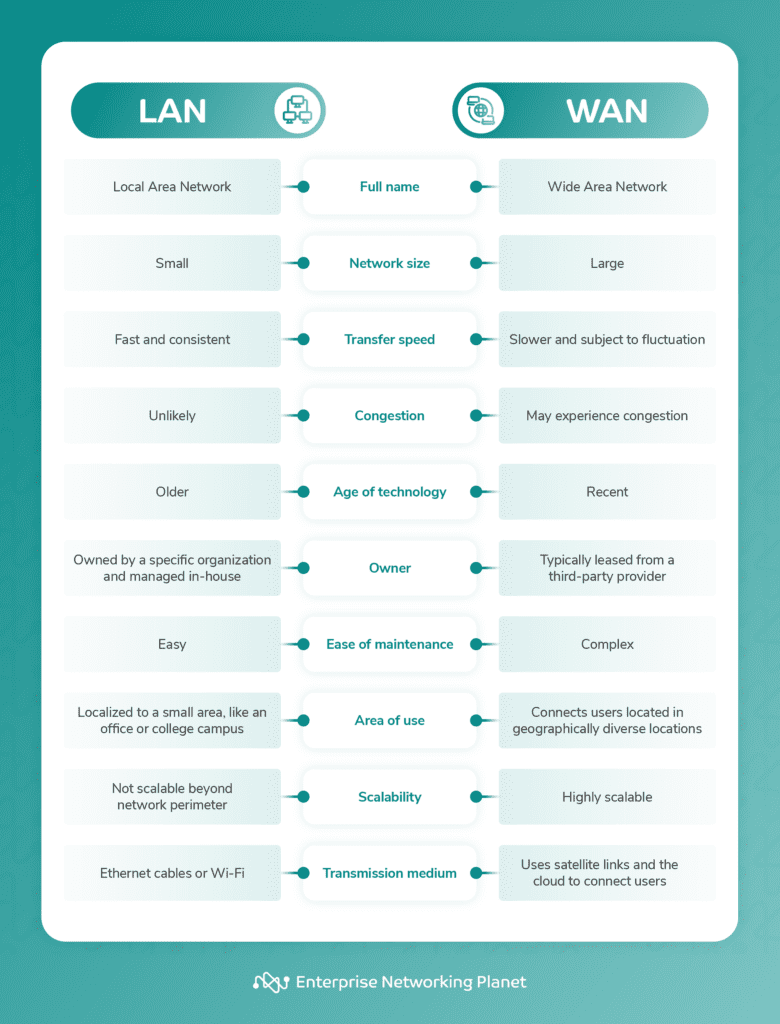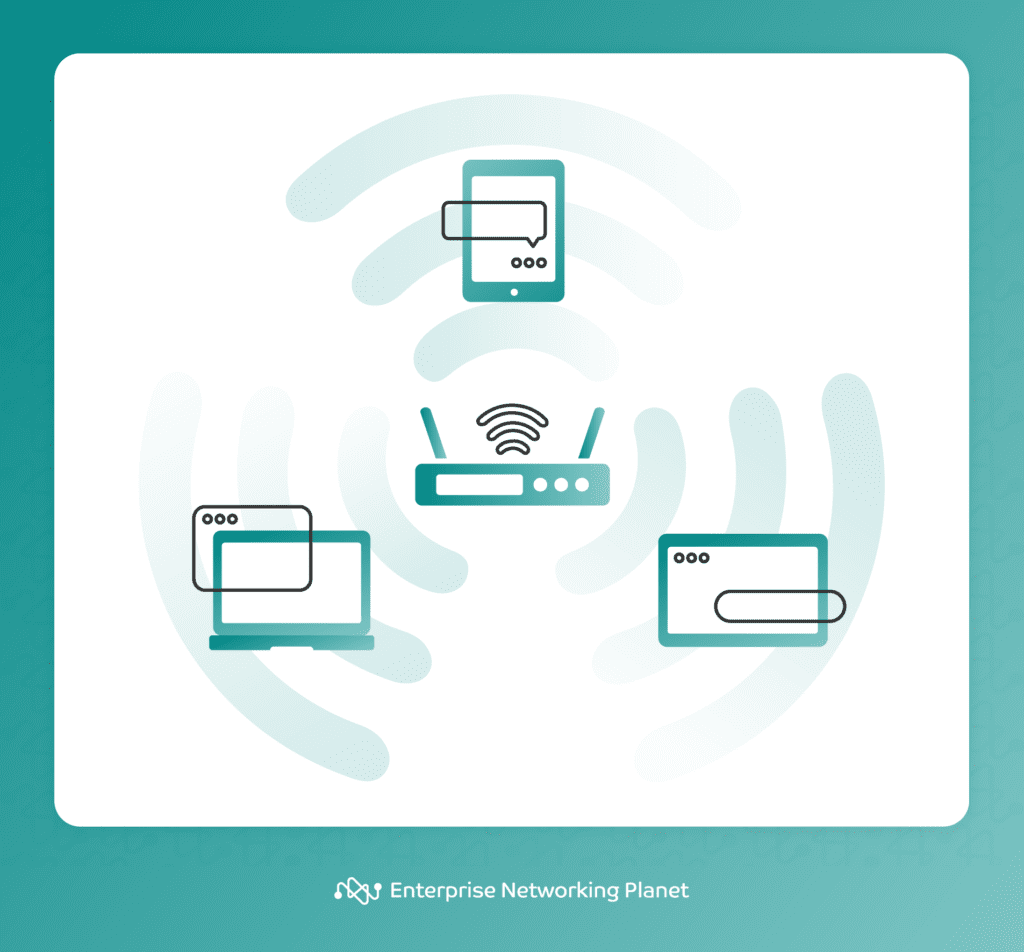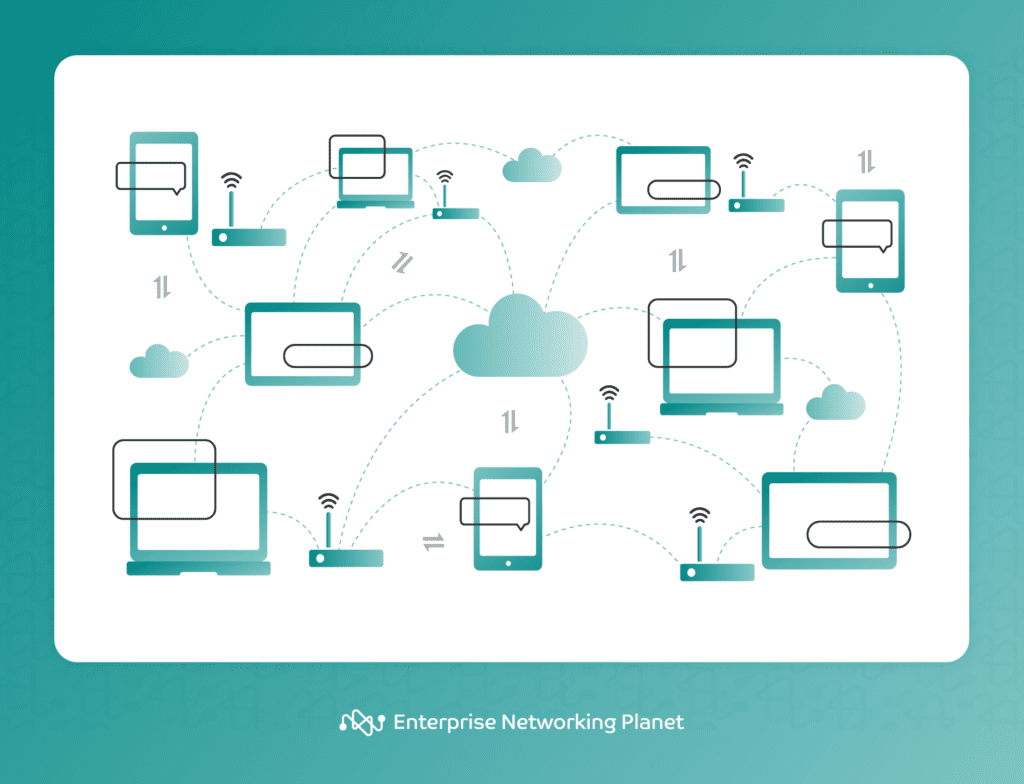

Image: liuzishan/Adobe Stock
Local area networks (LAN) and wide area networks (WAN) are both useful, but for very different purposes. Discover which suits your organization’s specific needs now.


A local area network (LAN) is a small network of devices in close proximity and directly connected to one another either with cables or Wi-Fi, while a wide area network (WAN) is network of dispersed devices or LANs connected across vast distances through global telecommunications technologies. A home or small office network is a common example of a LAN, while the internet is often cited as the world’s largest WAN.
Local Area Network (LAN): A LAN is a network of devices interconnected by a common communications line. These devices are located in close proximity to each other and are usually housed in the same building or office complex. The LAN allows devices to share resources like files, printers, or apps while also facilitating communication between them. Unlike a WAN, it is easy to set up a LAN.
Wide Area Network (WAN): A WAN is a telecommunications network that connects devices spanning multiple locations spread across the globe. For instance, businesses with locations in diverse places use WANs to connect to their branch offices, enabling their employees to access resources from any location. WANs use satellite links, leased lines, multiprotocol label switching (MPLS), and other communication technologies for secure data transfer between devices.
Here is a quick side-by-side comparison of LAN and WAN to better display their basic differences:

LANs and WANs function very differently from one another, using different protocols and management models to achieve essentially the same function: sending and receiving data packets between users on different devices.

A LAN provides shared access to computing devices located near each other. Data on a LAN is commonly transmitted through peer-to-peer communication (directly between devices) or client-server communication (devices connecting to a central server). LANs use network protocols like Ethernet to transmit data between devices.
The following three topologies are used for transmitting data in LANs:
When a device on the LAN sends information to another device, it first breaks down the data into packets. These packets contain source and destination addresses. The source device sends the packet, and with the help of switches and routers, the packet is forwarded to the destination device.

Due to their geographical size, WANs are usually owned and managed by a service provider such as MPLS, satellite services, Virtual Private LAN Services (VPLS), or cable companies that help in long-distance communication and data transmission.
The infrastructure components used in a WAN include switches; routers; transmission lines like fiber optic cables, satellite links, and wireless connections; and a range of other networking equipment.
WANs transmit data either through point-to-point (P2P) connections or shared circuits using packet-switching. In P2P connections, packets sent from one point are delivered to the other using Layer 2 of the OSI model. P2P connections are also known as circuit-switched networks, private lines, or leased lines.
A more modern approach is packet switching technology, where data does not rely on any physical connection between nodes but is broken down into small manageable packets. Each packet is assigned a source address and a destination address. Then depending on the traffic, the data is allowed to take any path to reach the destination, as opposed to being limited to a predetermined route.
Despite the similarity of their names, LANs and WANs differ on most points, including size, connections, cost, security, and speed.
LANs and WANs do have some things in common, namely their basic components and purpose.
Unsurprisingly for such different technologies, LANs and WANs have very different use cases.
LANs are an excellent tool for creating secure connections between devices located close to each other. Here are some use cases where LANs prove to be incredibly useful:
WANs are the go-to option anytime an organization needs to extend connectivity outside of a limited area. Here are some examples where you might need a WAN connection:
Organizations need to choose the right enterprise network solution when it comes to sharing information across different devices or locations. Examining your business needs will help you make the right decision when selecting a LAN versus a WAN.
If you’re a small office and your business requirements are restricted to a particular workplace, you should choose a LAN. In contrast, a WAN is the ideal network for you if you are a large corporate organization with offices located in different cities or even countries.
If you have small, local network needs, here are the top enterprise LAN providers to get you set up. For bigger, more dispersed needs, here are the best SD-WAN providers to manage your network.


Susnigdha Tripathy is a full-time writer and editor based in Singapore, and a regular contributor to Enterprise Networking Planet. She has over 10 years of experience writing, editing, and delivering exceptional content for a variety of international technology brands such as Virtasant, a cloud technology company, and Krista Software, a provider of intelligent automation solutions. She has also appeared in ServerWatch and other industry publications.

Enterprise Networking Planet aims to educate and assist IT administrators in building strong network infrastructures for their enterprise companies. Enterprise Networking Planet contributors write about relevant and useful topics on the cutting edge of enterprise networking based on years of personal experience in the field.
Property of TechnologyAdvice. © 2025 TechnologyAdvice. All Rights Reserved
Advertiser Disclosure: Some of the products that appear on this site are from companies from which TechnologyAdvice receives compensation. This compensation may impact how and where products appear on this site including, for example, the order in which they appear. TechnologyAdvice does not include all companies or all types of products available in the marketplace.